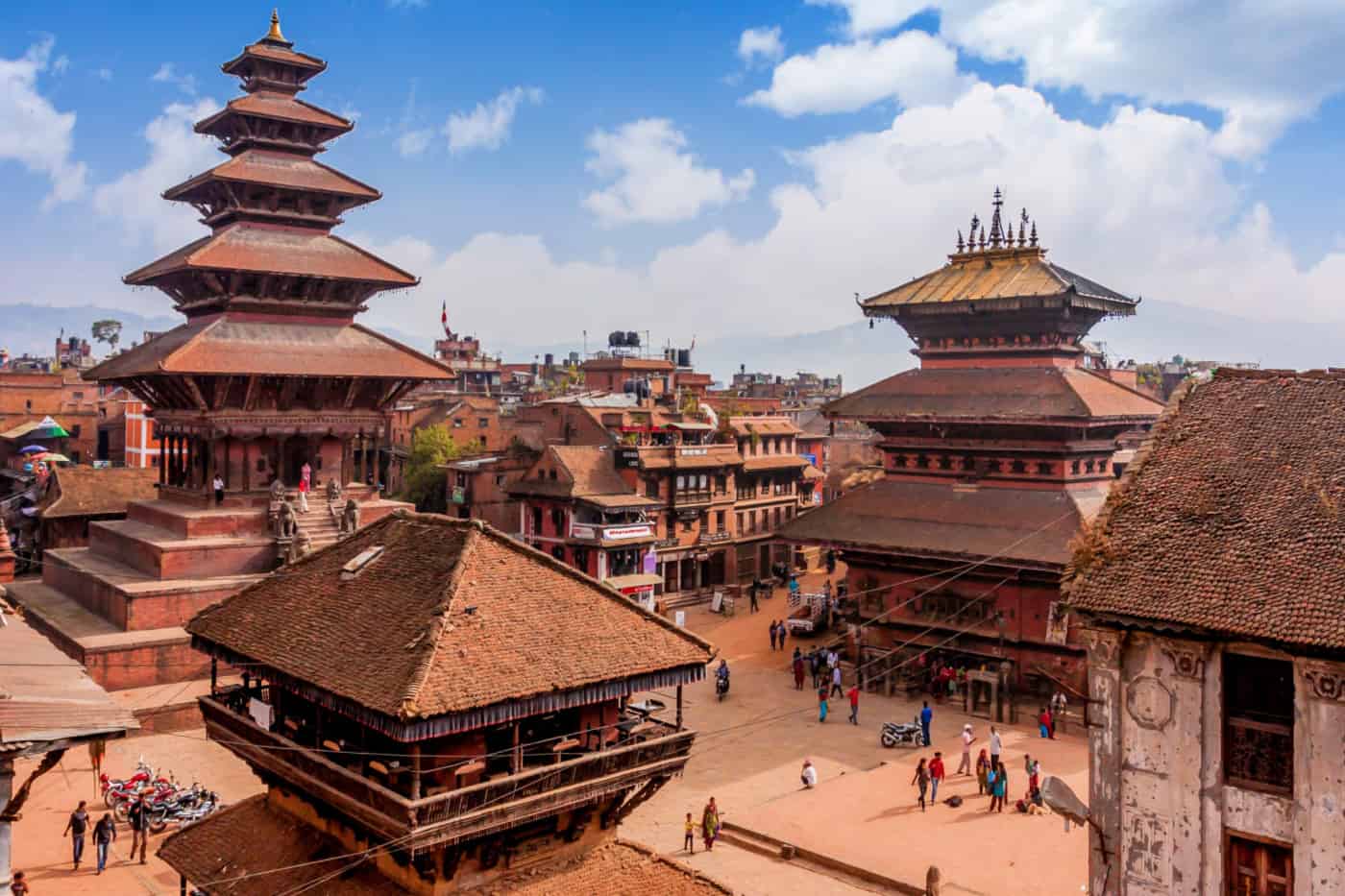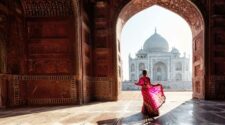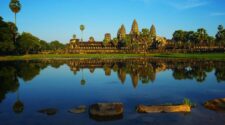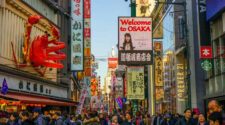Nepal’s incredible diversity and vast history is on full display throughout Kathmandu. Both the ancient city and surrounding towns combine to tell a story as old as time. Exploring the heart of Kathmandu will bring you back to the old Indian-Tibet trade route where bustling markets have sold goods for hundreds of years.
Beyond the historic marketplaces, visitors will have a hard time choosing which mesmerizing temple to visit next. Such is the local connection to Hindu and Buddhism, that it feels tangible and alive as if you could touch it with your own hands.
You may want to explore the city for a few days before venturing off to the Everest region, but the Kathmandu Valley has no shortage of hikes. When you aren’t exploring the local food scene, climb the nearby peaks to incredible views and ancient temples.

Explore Durbar Square
For centuries, Kathmandu was one of three royal cities in close proximity. Each has their own square, a place of coronation and celebration. The largest of the three can be found in Kathmandu. The sprawling space was where kings rose to power from the 12th to 18th centuries.
You’ll find Durbar Square appropriately placed in the heart of Kathmandu’s Old Town. As you wander around the square, you’ll marvel at the sheer concentration of architectural gems and opulent statues. Now a UNESCO World Heritage Site, it functions as an open-air museum showcasing the royal palace, the Dancing Shiva, and embellished carvings that tell stories of long ago.
After damage from the major 2015 earthquake, many of the historic buildings are no longer the same. However, exploring Durbar Square remains one of the best things to do in Kathmandu. Make your way through each beautiful courtyard that unlocks another series of man-made wonder.
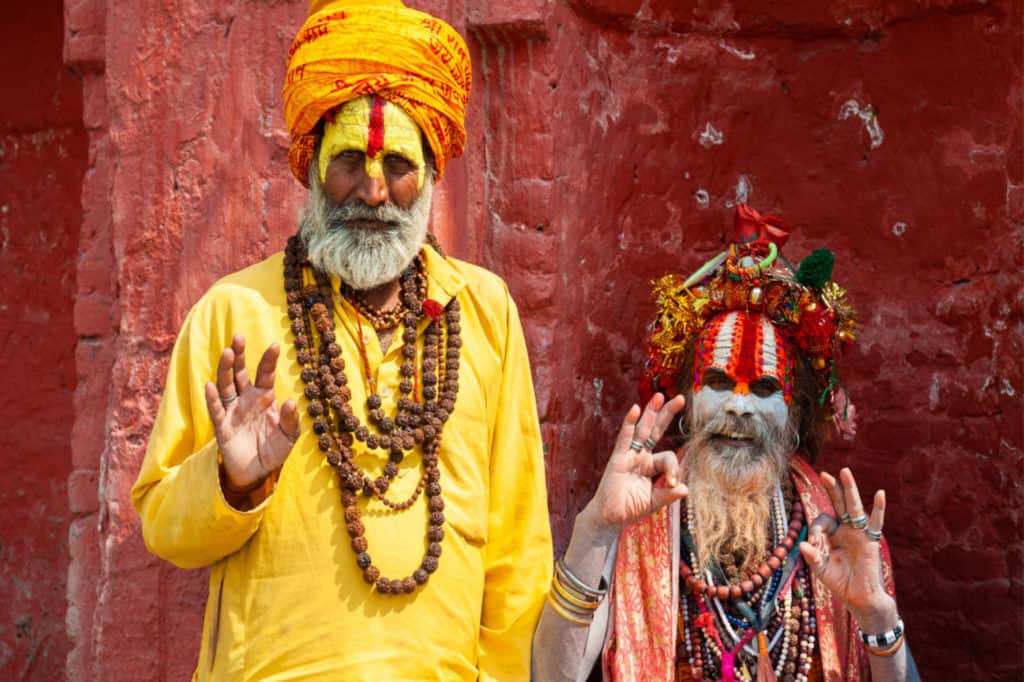
Experience Pashupatinath
On the banks of the Bagmati River, the Pashupatinath is the oldest and most important Hindu temple in Kathmandu. The UNESCO World Heritage Site contains over 500 temples, pagodas, ashrams and shrines with a mix of Hindus, Buddhists and sadhus roaming the grounds. The latter are ascetics who wander the temple grounds, often giving visitors blessings.
The more you explore, the more you’ll discover what is a city of temples rather than just one. However, the main structure is one of the most revered Hindu temples in the world. While Buddhists and travelers alike can roam freely, the main temple is off limits.
Following their beliefs in reincarnation, visitors may find Nepalese Hindus being cremated beside the river. The open-air cremation can be confronting for guests who will have an unabridged look into another culture and spirituality. These cremations take place between 7am and 10am. Another important part of the day at Pashupatinath is at 6pm, when aarti (fire worship) takes place.
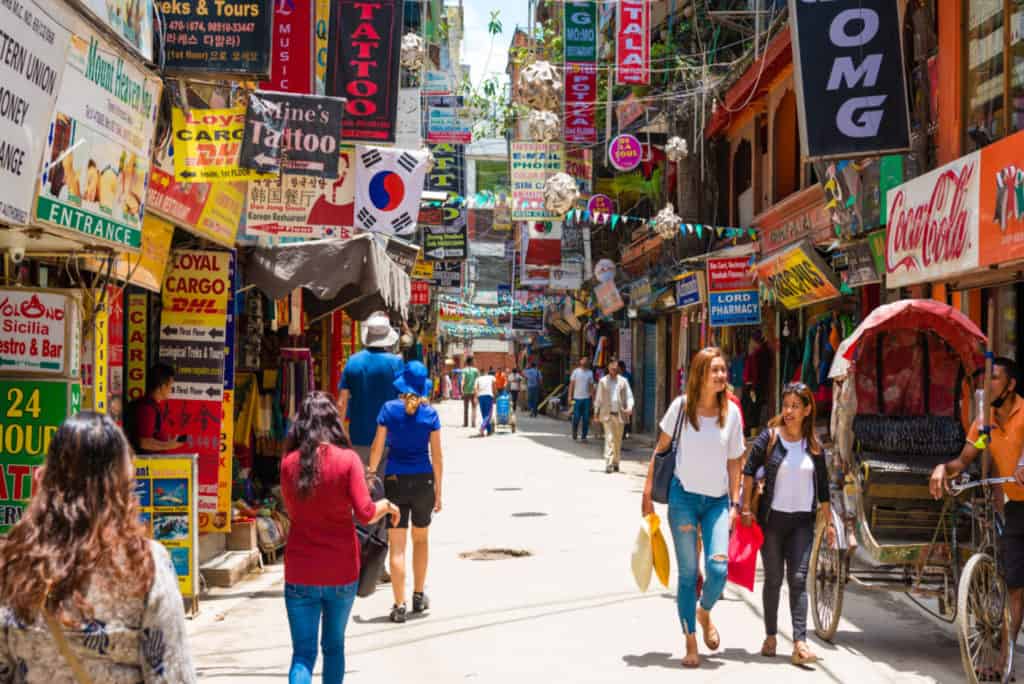
Get Lost in Thamel
If you were to measure the history of Kathmandu, Thamel would be a mere dot. Yet the district has risen to be one of if not the most popular tourist destination in the city. The bustling streets of Thamel are lined with eclectic vendors, bars, restaurants, and street food, all clothed in neon lights after dark.
During the day, explore the central neighborhood’s narrow laneways and discover one of the top shopping hubs in town. As you wander, you’ll find an array of amazing hand crafted goods with locals showing off their skills and waiting for you to barter. Common items include the soft Pashmina fabric, singing bowls and fascinating Nepalese paintings called Thangkas. Alongside you will be anxious adventurers trying to complete their gear list before heading off of their Everest base camp trek.
Come nightfall the bars, fueled by the local backpacker scene, take over. The atmosphere goes up another notch as you bounce between cheap bars, meeting travelers from all over the world.
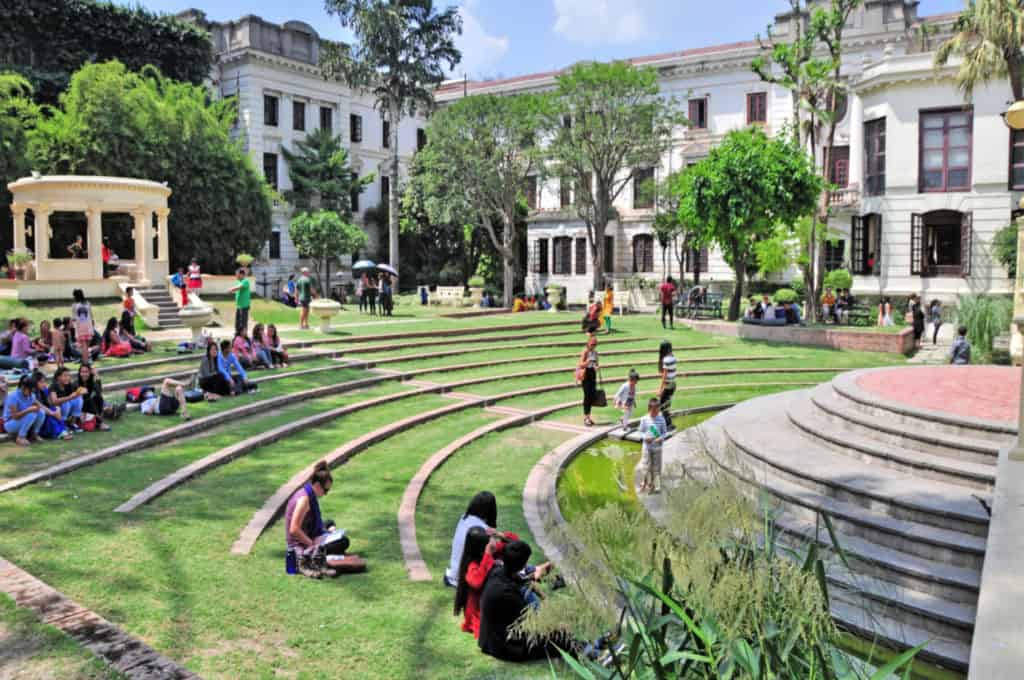
Chill in the Garden of Dreams
Aside from being a hub of thrilling activity, Thamel is also your gateway to experience many of the top local attractions. This includes Durbar Square and our next stop, the Garden of Dreams. Just a short stroll from the chaotic laneways is an urban oasis where the tranquility washes over you like a soothing bath.
You’ll quickly feel a world away from markets and Gorkha Beer. The manicured landscapes have been perfectly restored after they were initially created by Kaiser Shamser. He was inspired by the plush estates of England and designed the neoclassic garden in 1920.
With the help of the Austrian government, the 21st century revitalization of the park has made it a must-stop on your Kathmandu itinerary. Gaze upon the original gate before strolling around the resplendent fountains, small lakes and the three remaining pavilions.
Once you’ve found a comfy spot, lay down the supplied lawn mats and chill. While the world of Kathmandu spins fast, this is one place where time slows.

Visit Boudhanath Stupa
Alongside the many significant Hindu temples, Kathmandu has several incredible Buddhist stupas. Although not temples themselves, they’re historic monuments noted for their bell-shaped towers. Boudhanath Stupa is the biggest such monument in Nepal.
The current stupa was built in the 1300s along the traditional trade route that meanders through the country before arriving in Tibet. It’s estimated that the original structure was built some seven centuries prior before it was destroyed by the Mughal invasion. Throughout this time, the location remained a place of worship for Buddhists. They believe the location to be the horizon between earth and the afterlife.
The most striking aspect of the monument are Buddha’s giant eyes at the top of the towering mandala. The spherical stupa will draw you in with her sheer size before guiding you to the gilded details and prayer flags that make Boudhanath a truly captivating site. From the several elevated platforms, take your gaze off the stupa and enjoy the splendid views from the monument’s hilltop location.
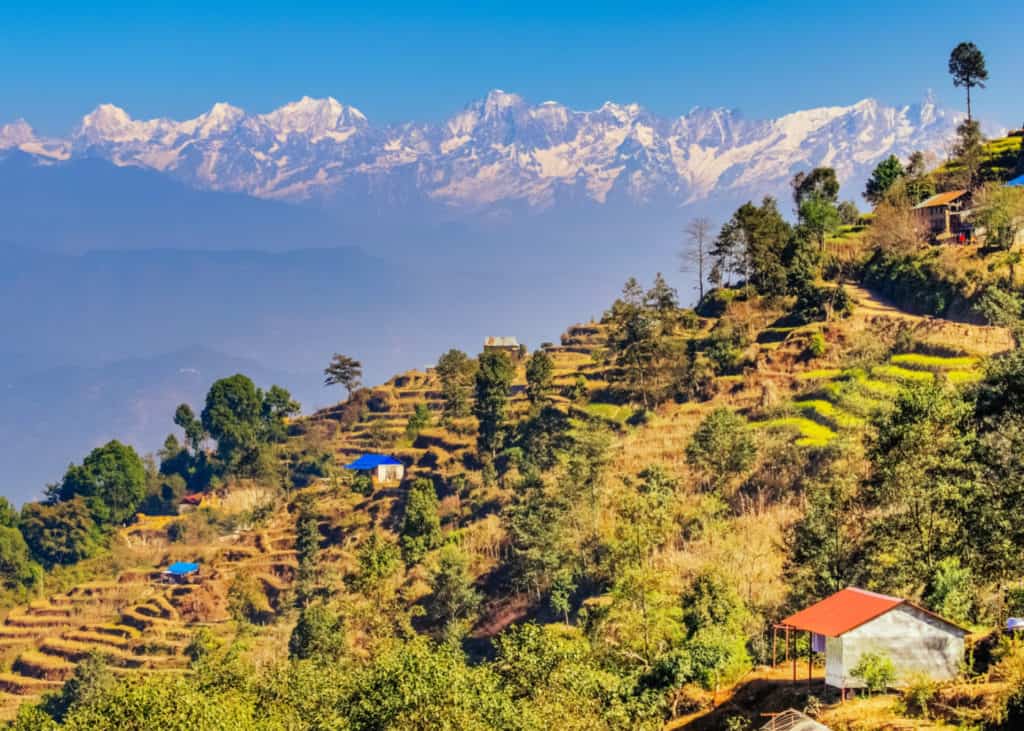
Take a Hike
For many would-be hikers, Kathmandu is the first stop on their travels through Nepal. It’s a place to pick up some last-minute gear and bask in some comfort before venturing deep into the Himalayas. But the lush green hills that surround the capital city are a worthy hiking destination on their own. The hills are a great way to explore the fringes of Kathmandu or blow off the cobwebs before bigger challenges.
Just out of the hustle and bustle of the city streets, you’ll find yourself within the Kathmandu Valley, where hills and lush vegetation reign supreme. The many local hikes are within national parks and remain at low altitude, providing great family and beginner-friendly experiences.
Some of the top local hill treks include Nagarkot and Phulchowki. The former leads you to stunning mountain vistas best appreciated at dawn and dusk. The latter offers more adventure and some alpine hiking. Visit the Phulchowki Mai shrine and end with views of the Annapurna Range.
On this guided hiking tour, take in a spectacular sunrise at Nagarkot before hiking through the hills to Dhulikel.
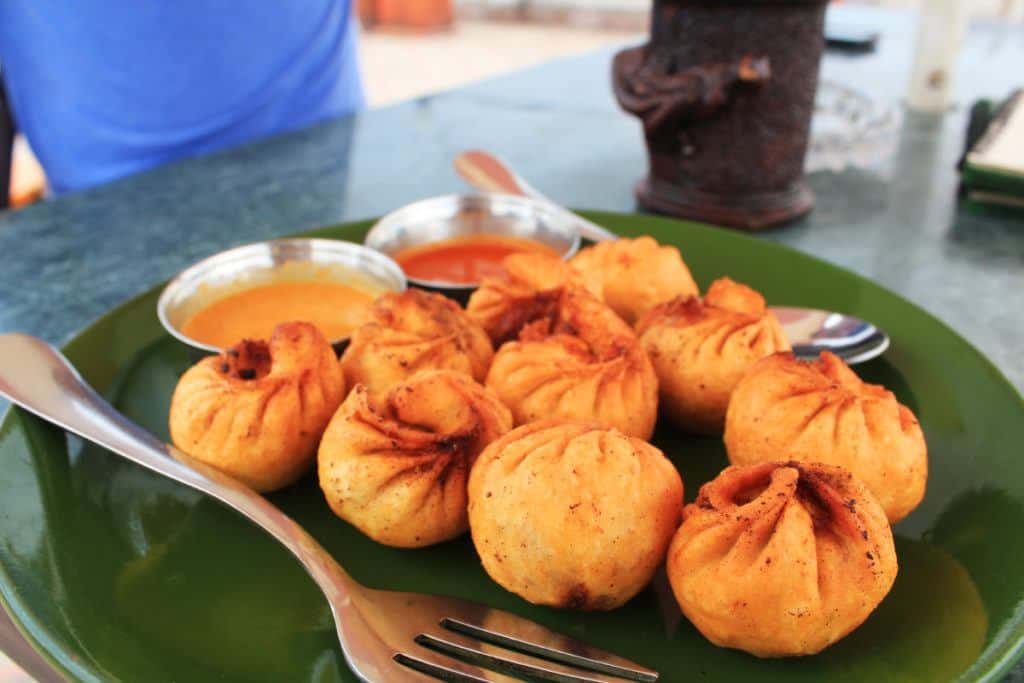
Try the Local Food
Food plays an enormous role in Nepalese life. It’s a part of local spirituality, it bonds friends and families, and is the centerpiece of all celebrations. Many of the traditional dishes that you’ll try in Kathmandu have been handed down through the generations, connecting eras and centuries come and gone.
If trying new eats is a big part of your travels, then you’ll have a delightful time wandering the streets of Kathmandu. There is plenty of worldly influence and diversity in Nepalese cuisine, but for truly authentic dishes, Newari cuisine is the one to try. The cuisine is vastly organic, with a wide range of taste thanks to the ample use of spices.
One traditional Newari dish to try is Kwati, a healthy vegetarian dish with an explosion of flavor. However, to make things easy, order a Newari Khaja Set. A dish that comprises 10 plates that showcase the full range of the traditional cuisine.
After trying plenty of Nepalese food, join a local chef for a cooking class. Venture to a market before learning all the tricks to recreate this delectable cuisine back home.
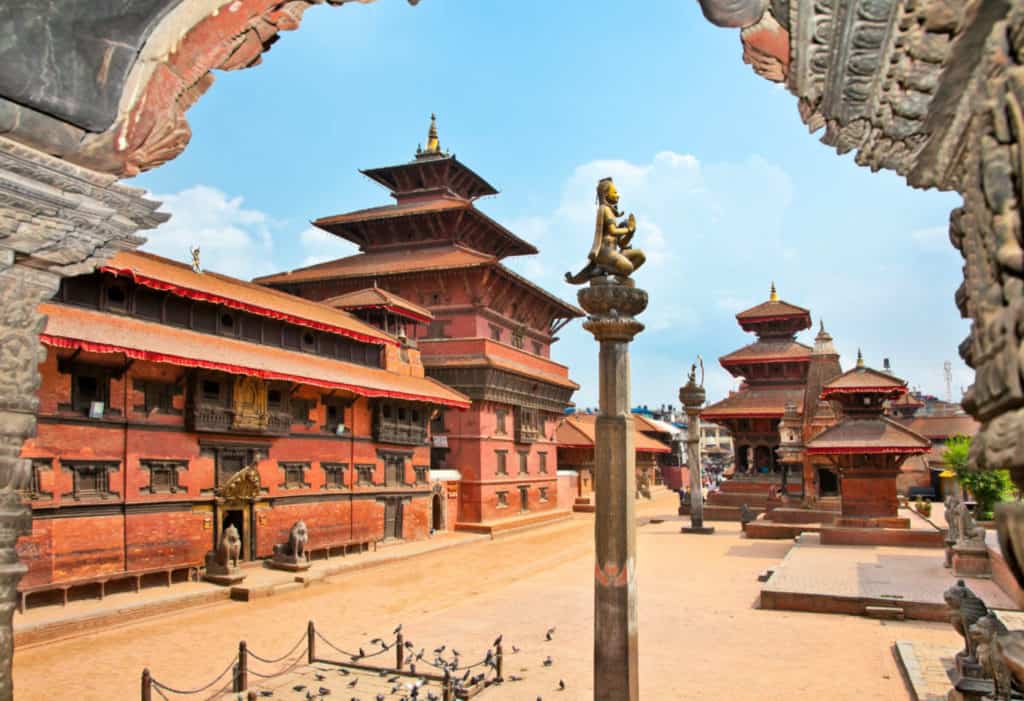
Explore Patan: the City of Beauty
Just three miles south of Kathmandu is the oldest town in the Kathmandu Valley: Patan. Also known as Lalitpur, which translates to City of Beauty, its historic architecture and storied streets will take your breath away.
The city was once a central home to the Newari people, the valley’s indigenous community, who have since spread throughout Nepal. Their ancestors were Kirat, who founded Patan in the third century. Today, you can discover the ornate Newari buildings that form much of this historic town, wandering by temples, palaces and their own Durbar Square.
Outside of these monuments are maze-like streets where courtyard after courtyard is connected to one another via pencil-thin alleys. Throughout are delicious restaurants and shops catering to both locals and a number of NGO workers that now call Patan home.
After getting lost one too many times, make your way to the Patan Museum before visiting the Golden Temple (Kwa Baha). For more amazing food, wander into the Nandini Food Court for a Khaja Set or test your love of spice at Swotha Square.
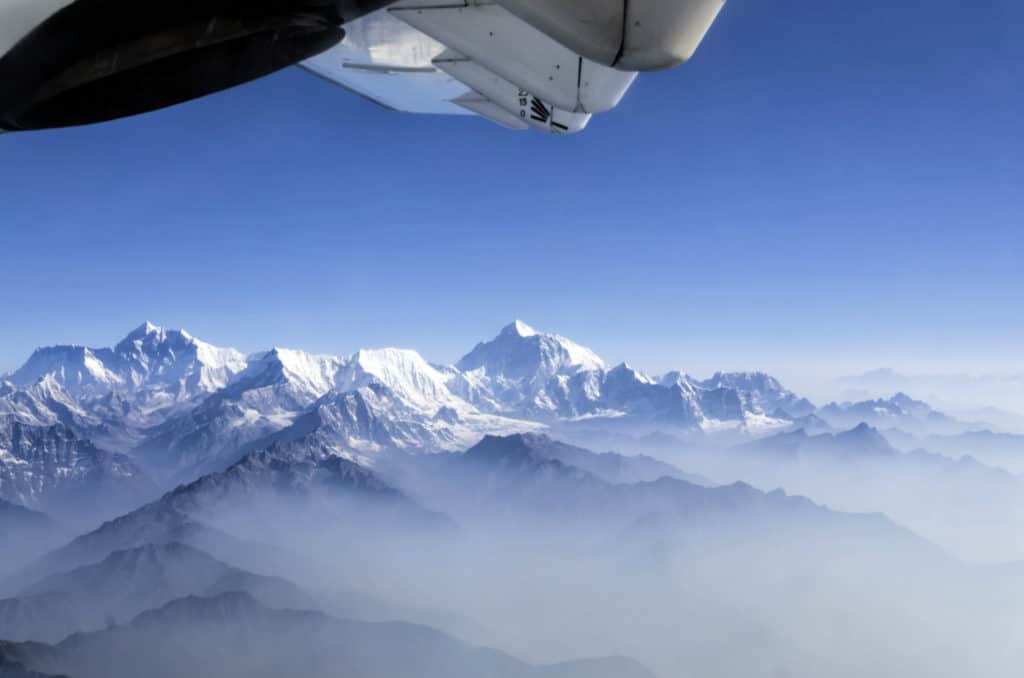
See Everest From Above
In 1852, Everest was established as the world’s tallest mountain. Since that heady day, the mountain has held a certain fascination with travelers, climbers and dreamers all around the world. For some, the ultimate adventure is to climb to the summit. For others, a trek to base camp is thrilling enough. But what if there was a way to get up close without putting on your mountaineering boots?
An incredible way to experience the imposing beauty of Mount Everest is to see her from above as you fly over the Himalayas. Forget forging out thousands of dollars, crossing the Khumbu Icefall and caressing the edge of the Lhotse Face. Simply sit back in your seat as the pilot provides an unforgettable experience.
On this panoramic flight of Everest, depart from Kathmandu and over the majestic Himalayas before coming face to face with the world’s tallest peak. And don’t worry, there are no annoying middle seats on this flight!
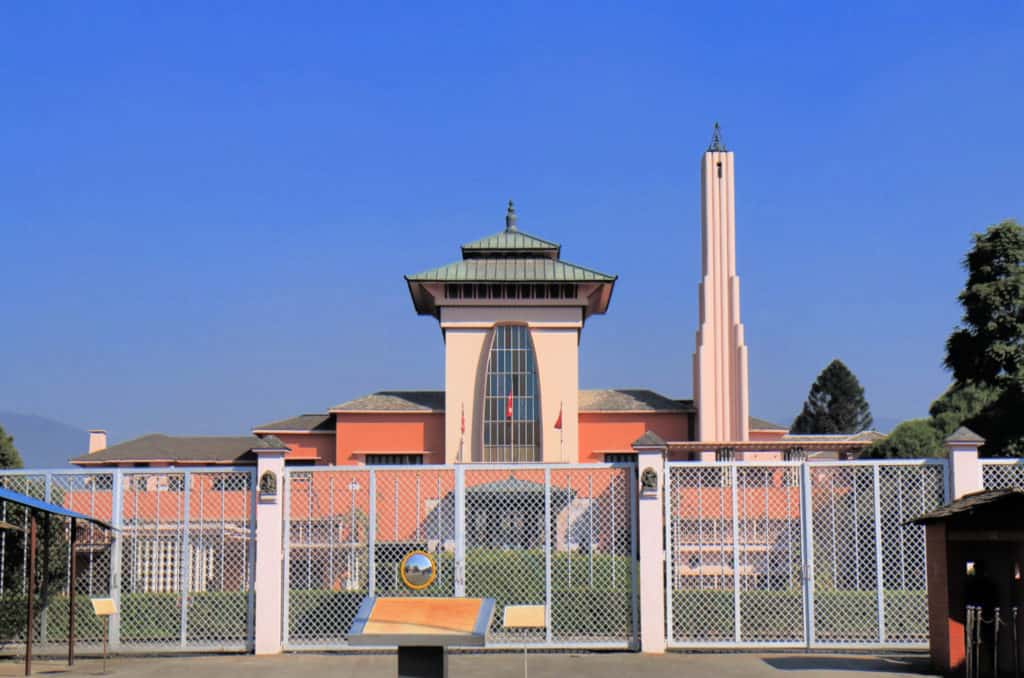
Tour the Narayanhiti Palace Museum
Up until 2006, the Narayanhiti Palace was the home of the reigning monarch. The buildings you see today were created under the rule of King Mahendra in 1963. Just a short walk from Thamel, the palace was a place of hospitality and important events. But also a place for coup d’etats.
Following the 2006 revolution, the palace was transformed into a museum. It displays the fascinating history of the Royal Kingdom of Nepal, including its rather gruesome recent chapter. The gorgeous courtyards and surrounding grounds welcome you to the museum. While aesthetically pleasing, they’re also where the crown prince shot his parents, siblings, and later himself. These horrific events led to his uncle taking over the thrown and later abolishing the monarchy completely.
Intrigued? Well, the Narayanhiti Palace Museum has just as much to offer inside where you’ll find three sections to explore. Start with the guest wing where kings, queens and national leaders from around the world spent the night. Witness the throne room within the State Wing before seeing the private rooms of the most recent monarchy. All three have decor and furnishing straight out of the 60s, as if the passage of time has not affected the palace.
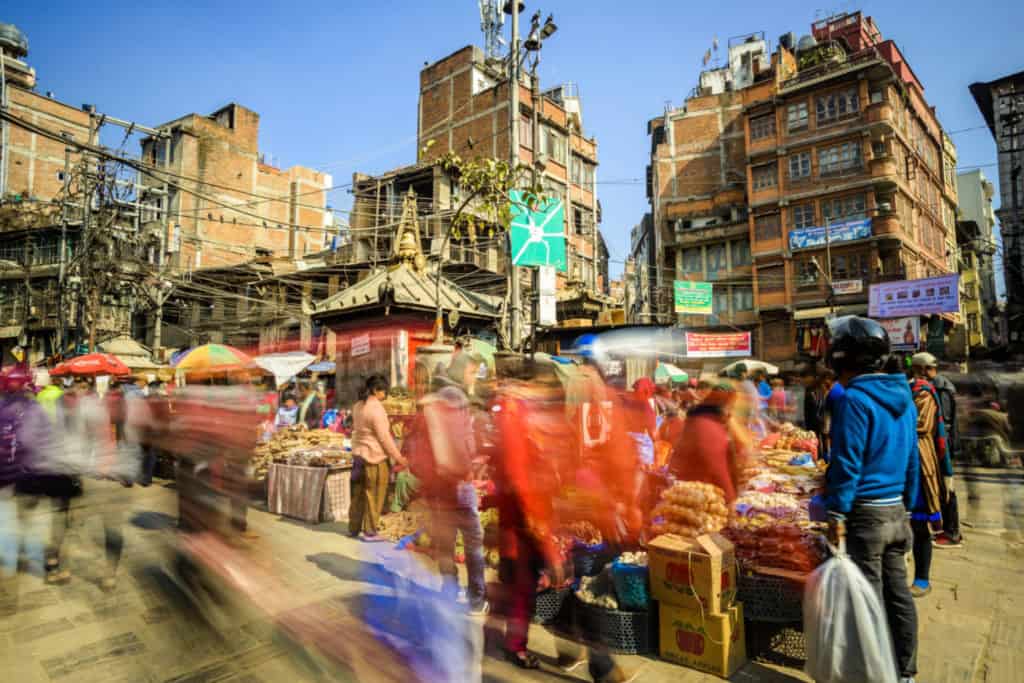
Spend Time in Asan Tole
The royal squares may hog the limelight, but you must visit Kathmandu’s busiest square. Asan Tole is within one of the oldest sections in the city and has been a busy congregation of shoppers and vendors for centuries. Today, the aroma of spice still floats through the air, providing an exceptional look into everyday life in Kathmandu.
The sounds and smells of Asan Tole will hit you long before you reach the historic square. But even then, the early warning won’t prepare you for the rush of activity and vivid colors that greet you on arrival. Multi-story buildings horde great numbers of market goers into tight spaces as they jump between stalls slinging vegetables and the full selection of spices.
The action starts early at 6am when vendors arrive from all over the valley, bringing in their wares. Asan Tole doesn’t quieten till well after dusk as merchants make their way out of the city. It’s appropriate then that Asan Tole is home to the Annapuran Temple, that honors the goddess of abundance. Other prominent landmarks include the mosaic Ganesh shrine, and the Narayan shrine, which is in the center of the square.
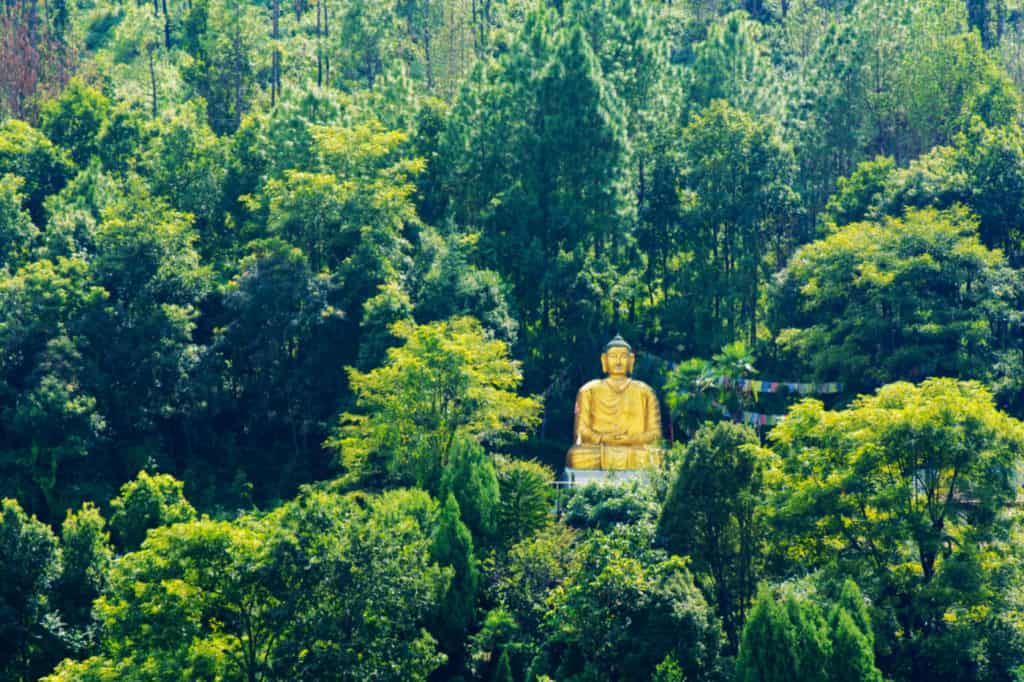
Wander the Royal Botanical Gardens
In the foothills of Mount Phulchowki, south of Kathmandu, the Royal Botanical Gardens are a sight for sore eyes. Although Kathmandu is nothing short of a burst of effervescent colors, you’ll no less enjoy the floral splendor on display. The Royal Botanical Gardens first opened in 1962 with the help of the then king. It’s the only one of its kind in Nepal, now covering over 200 acres and more than 500 plant species.
As you enter the main gate, one of the first major attractions you come across is the Godavari Spring. The spring is sourced from the Godavari River, which stems from the high mountain regions creating ice-cold water. Aside from its refreshing beauty, it’s the legend that surrounds the spring that makes it so revered.
It’s believed that Godavari Spring was created by Buddhist Mystic Padmasambhava who struck a rock, releasing not just the water, but also truth into the world. After visiting the popular pilgrimage site, explore the expanse of gardens home to the Coronation Pond, and seasonal sections designed to have flowers blooming all year long.
If you’re feeling sprightly, hike to the summit of Phulchowki, the highest point in the Kathmandu Valley.
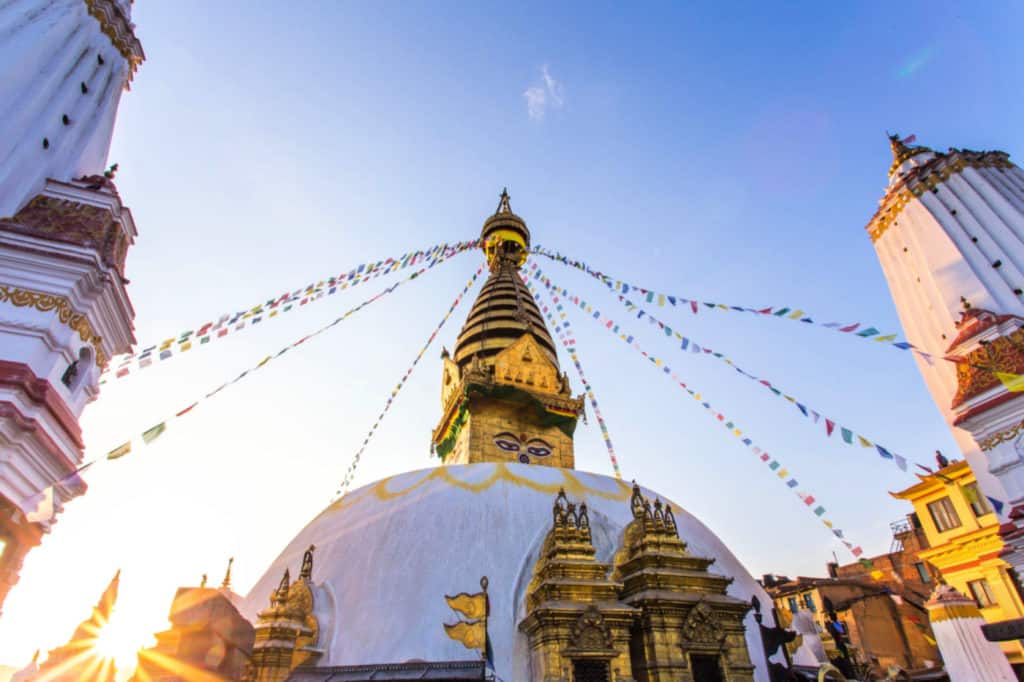
Go See the Swayambhunath Stupa
After the Boundhanath, Swayambhunath Stupa is the most important temple in Kathmandu. The temple was first built in the 5th century, in the western end of the city, high on the hilltop. The historic structure means “self-created” and is otherwise known as the Monkey Temple, for reasons that will soon become clear.
Swayambhunath Stupa is an immense complex of temples, shrines and monasteries. The extraordinary grounds also feature a library and museum. There are several ways to enter the temple, but to do it right, approach from the eastern side. Here, you’ll be met by over 350 steps, worn down by thousands of visitors of the last 16 centuries.
As you wander up, you’ll pass an impressive Tibetan prayer wheel that stands 12 feet (3.6m) tall and a trio of embellished Buddha sculptures. After reaching the peak, take in the vast views of Kathmandu that are even more spectacular under the evening light.
Joining you will be the temple’s resident monkeys, who are believed to be holy. This is because they came out of Manjusri’s long hair. Alongside your furry friends, explore the five carved Panch Buddhas, the Harati Devi Temple and the immense Stupa. The latter standing glorious above everything else.
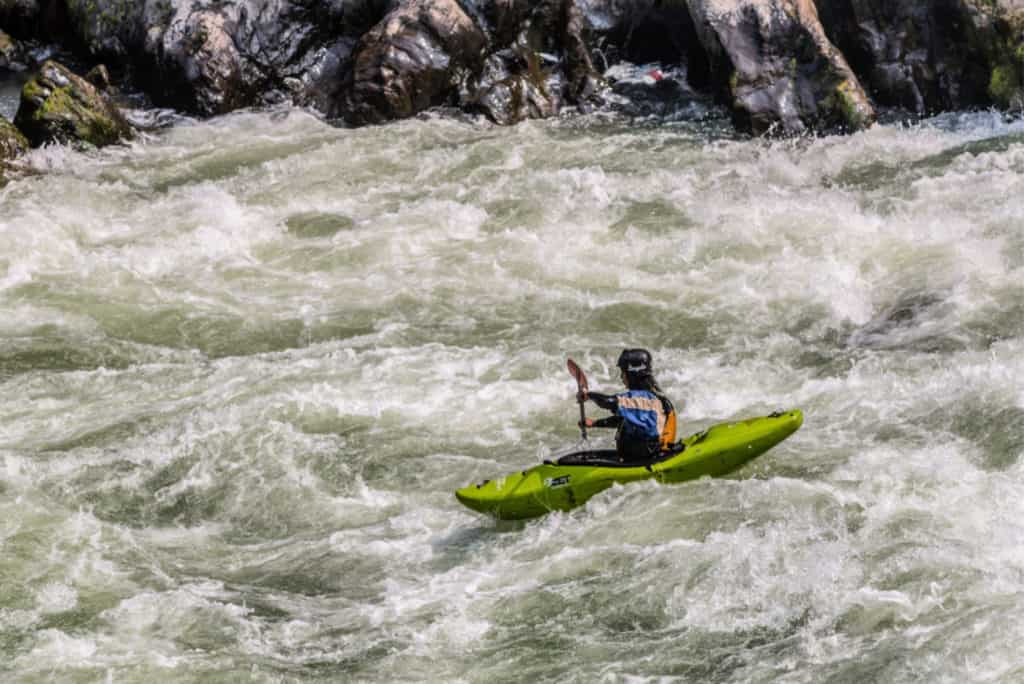
Experience Kathmandu’s Raging Rivers
We all know Nepal to be a mecca for hikers, climbers and mountaineers around the world. But any country with towering, snow-capped mountains is going to have their fair share of boisterous rivers. Nepal is no different.
With eight of the 14 tallest peaks on earth, the snow-melt leads to surging rivers. Add in the picturesque scenery, and the groundwork has been laid for your best white water rafting experience yet. As for first-timers, there are a number of beginner experiences on offer.
When wandering around the tourist-hub of Thamel, you’ll spot plenty of white water rafting outfits hustling for your business. But before you sign up for anything, it’s best to know a thing or two about the rivers around Kathmandu.
For beginners, Trisuli River is a popular option. Three and a half hours from the city, the river is exhilarating but not overly intimidating and is surrounded by beautiful mountains and quaint villages. For something closer, consider the Seti River, just thirty minutes from town. Short and sweet, the river features a series of Class III and IV rapids with views of Annapurna.
But for something unforgettable, consider a multi-day trip down the Sun Kosi River. The path features an array of tranquil beaches, gorgeous scenery and exciting rapids.
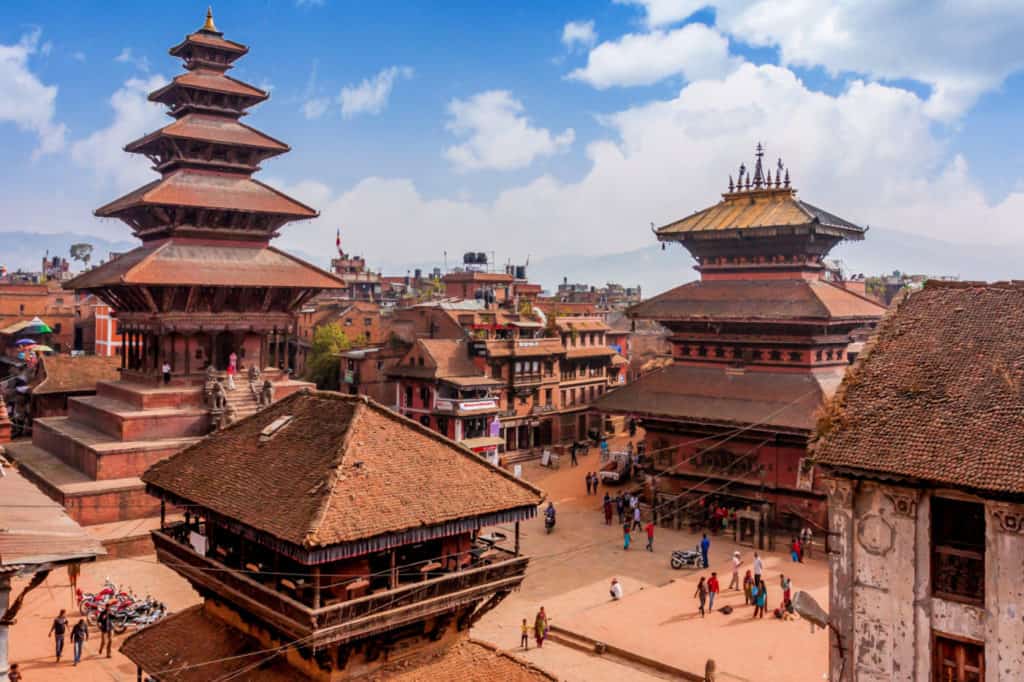
Visit Neighboring Bhaktapur
A quick 6 miles (10km) journey from the heart of Kathmandu will bring you to the charming small village of Bhaktapur. The town is an extension of all the things we’ve come to know and love about the nation’s capital. In the 12th century, Bhaktapur became an independent city state under King Ananda Malla. It led to many distinct buildings and an abundance of fabulous temples.
As you wander its central streets, you’ll notice the lack of motorized traffic. In fact, all cars are banned from the city center, making it a haven for pedestrians. Enjoy the relative tranquility compared to Kathmandu as you discover the intricate and ancient architecture. This is best seen around Tuchapai Tole, where there’s a wonderful concentration of gilded woodwork.
However, the true highlight of Bhaktapur is the many temples around town. The one most likely to leave you star struck is Nyatapola Temple. It’s the tallest in Nepal, the five-story temple was built at the very start of the 18th century. Other must-visits include the Royal Palace in the town’s own Durbar Square, along with the National Art Gallery.
Explore Bhaktapur and Patan on this 6-hour guided tour.
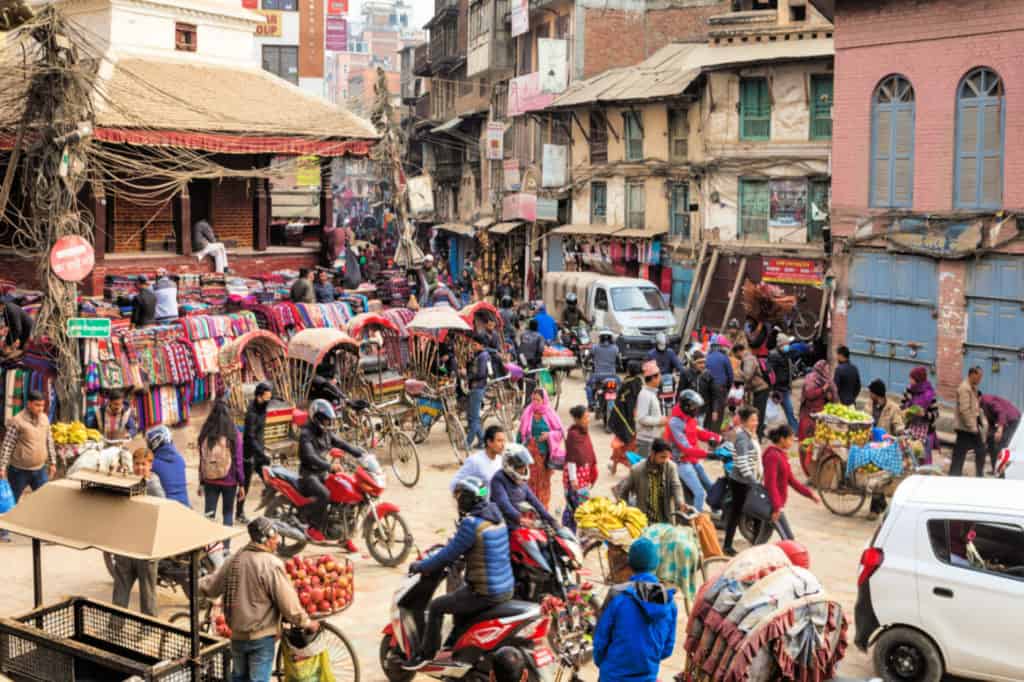
Walk Around Indra Chowk
After making your way through the wonderful chaos that is Thamel and Durbar Square, you’ll be well equipped to handle all that is thrown your way in Indra Chowk. The rows of stalls and vendors make it another great place to shop for gifts (beaded jewelry is a local specialty), people watch or simply wander admiring the beautiful facades as you go.
Indra Chowk has been at the forefront of Kathmandu life for centuries. It’s found on a principal thoroughfare that cuts through the historic heart of the city. Making it a part of the old India-Tibet trade route. There are six major streets that connect in Indra Chowk, creating a hive of activity for shoppers, but also many pilgrims.
The marketplace is named after Indra, the Hindu lord of heaven. So while it’s one of the best places in Kathmandu to shop, Indra Chowk is as much a place of ceremony. If you’re lucky, you’ll stumble upon festivals and processions must notably Indra Jutra, where chariots of revered Hindu figures pass through.
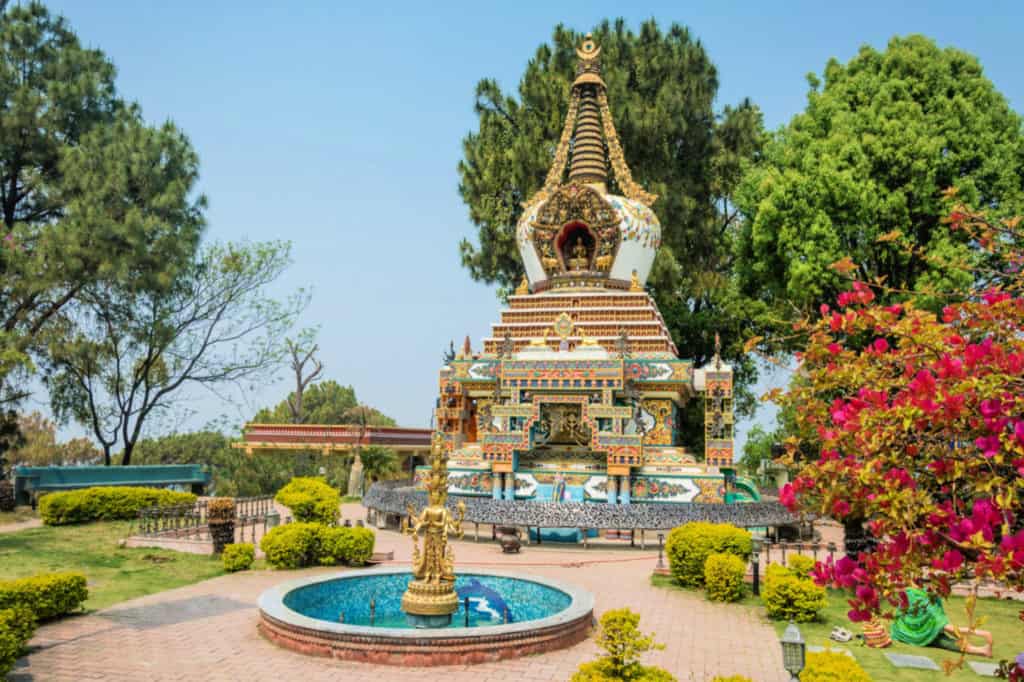
Visit Kopan Monastery
North of Boudhanath Stupa, the Kopan Monastery is a gated site home to 360 Buddhist monks. Compared to many of the historic temples around Kathmandu, the monastery lacks history, having opened in 1970. However, what it lacks it makes up for in beauty and hands-on activities.
There are several ways to reach Kopan Monastery, including local taxis and buses. But if you’re up for a stroll, you can complete a 5-mile (8km) hike from Thamel to the gates. As you explore the opulent grounds, you spot the giant Bodhi tree, the Chenrezig temple and the Thousand Buddha Stupa. These are complemented by the manicured gardens, prayer flags and wheels along with the abundance of sculptures.
Visitors arrive at Kopan before 10am, so you can take part in the morning meditation led by a western teacher. This is a lovely place to pursue a longer meditative experience as the monastery does single, 10 and 30 day courses. When all is said and done, enjoy the splendid views of the Kathmandu Valley.
Explore the Nepali Folk Musical Instrument Museum
Nepal is home to over 100 unique ethnic groups which have combined to produce well over 1,300 distinct musical instruments. Although the Folk Musical Instrument Museum may not be at the top of your to do list, this alone makes it worth exploring.
The museum was developed and curated by one man, Ram Prasad Kadel. He was inspired in 1995 by the country’s diverse musical heritage, enough to collect over 650 instruments. Each of them is now on display for you to see. Despite being a personal collection, the sheer scale of the museum can be as overwhelming as it is impressive. Thankfully, Kadel’s passionate approach to his museum will see him readily available to answer questions.
Highlights of the Instrument Museum include the saarangi, which will greet you at the entrance. It’s a traditional Nepalese stringed instrument, believed to be the largest of its kind on earth. Another must-see is the serpentine trumpet called the naagbell, which is often played by visiting musicians.
The museum is found within the Tripureshwor Mahadev Temple, one of the largest in Kathmandu. After admiring the musical heritage of Nepal, explore the complex teeming with relics, craftsmanship and culture.
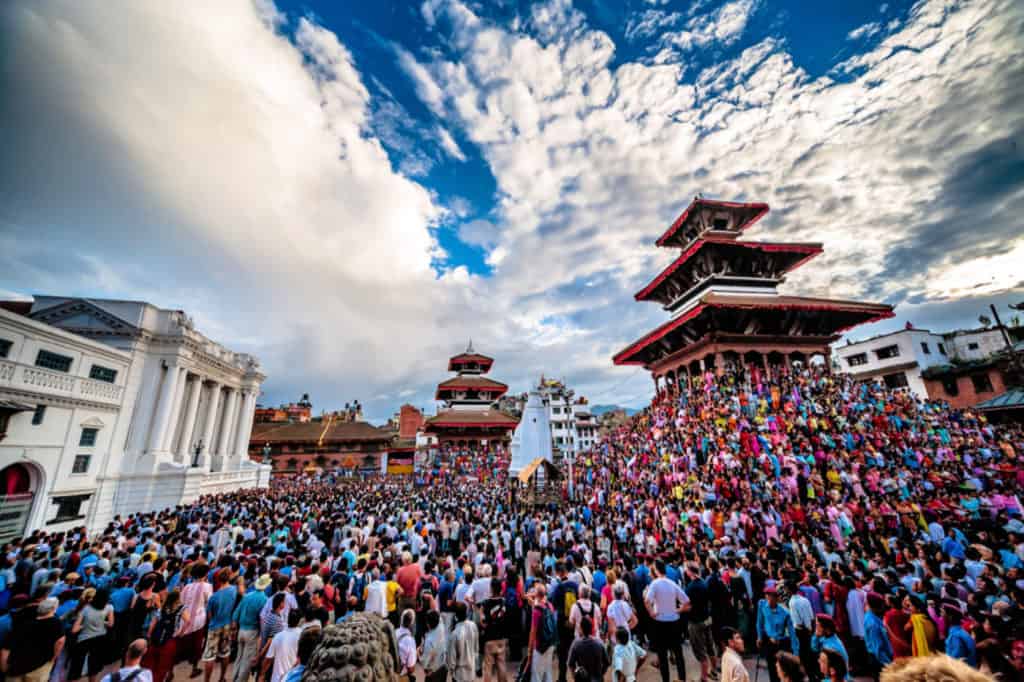
Experience the Local Festivals
The Kathmandu Valley marks the crossroads between several ancient civilizations in the Subcontinent. The city is home to 130 significant landmarks and seven UNESCO World Heritage Sites. A place of such history and importance is bound to have an abundance of cultural events.
Kathmandu is home to more jatras — aka street festivals — than anywhere in the country. Holi aside, the local calendar is packed with events. The most important annual jatra is Indra Jatra, which roughly translates to “celebration in Kathmandu”. The festivities last for eight days in the eleventh month of the Nepal Era calendar.
It dates back to the 10th century, when it was started to celebrate the founding of Kathmandu. Visitors will spot dozens of masked dancers that represent deities and demons along with processions of chariots featuring Kumari, the living goddess.
There are two other major jatras in the valley, Bisket Jatra and Rato Machindranath Jatra. The former held in Bhaktapur and the latter, Patan.
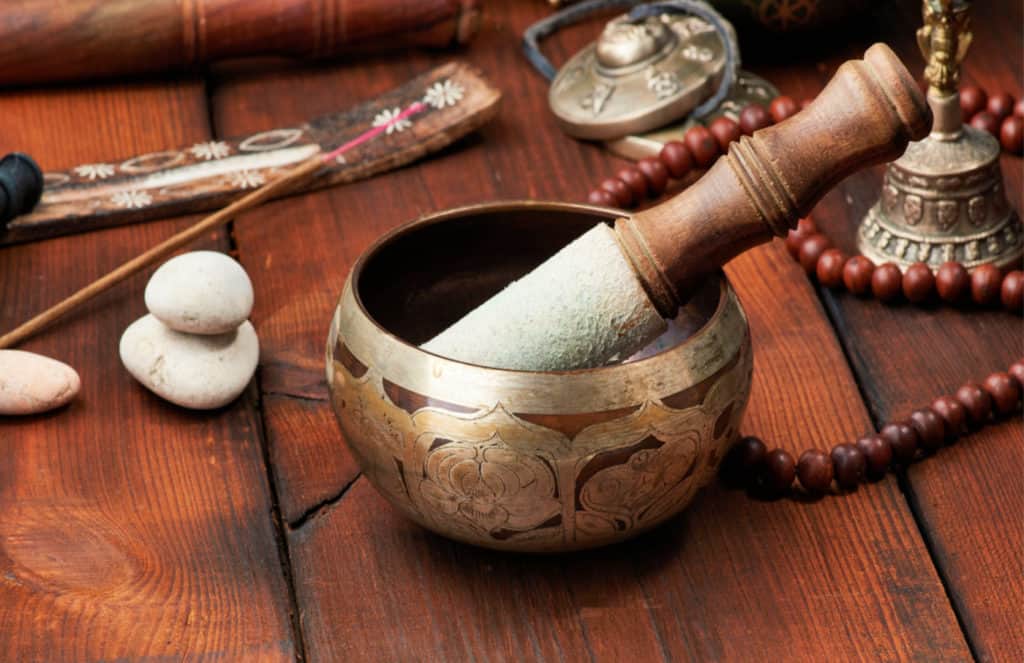
Sign Up for a Sound Massage at a Healing Bowl Center
What if I was to tell you that you can enjoy an invigorating massage without any touch? You probably don’t believe me, but it’s possible thanks to the many healing bowl centers around Kathmandu. Here, you can experience the traditional Tibetan singing bowls that will have you relaxed yet outside your comfort zone at the same time.
The practice of sound healing has been taking place for centuries and essentially induces a meditative stupor through the delightfully soft music. It may appear a little like witchcraft, but there’s plenty of science behind it. Most of our body is water, which is the perfect conduit for sound waves. As the water vibrates, it creates a deep, interior and whole-body massage.
The Nepal Singing Bowls and Healing Center is a great option right in the heart of Thamel. If you’re interested in purchasing a bowl, avoid the markets and buy directly from the centers for an authentic bowl.

